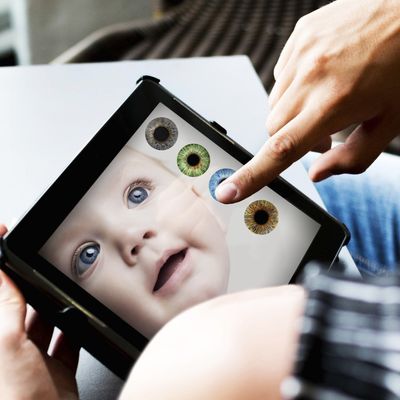
When most people think about genetically modified organisms, Chipotle corn or apples that don’t brown come to mind. But the “O” in GMOs doesn’t only refer to plants, it also includes animals and humans, and researchers are pressing ahead in those arenas as well. A Wired feature published this month outlines the impressive — and terrifying — advances in DNA editing.
Crude gene-snipping technology has existed for decades, but, recently, female scientists in the United States and Sweden discovered a more sophisticated technique called Crispr-Cas9. It’s like upgrading “rusty scissors” for a computer-controlled scalpel that slices open a DNA strand to drop genes at a specific place, Amy Maxmen writes in Wired. What’s more, the technology is easier and cheaper than other methods so more people are experimenting with it. Researchers have been able to stop cancer cells from multiplying, make cells impenetrable to the HIV virus, and create a fungus-resistant wheat that could solve world hunger. But Crispr technology could also lead to scenarios straight out of a Marvel comic:
It could at last allow genetics researchers to conjure everything anyone has ever worried they would — designer babies, invasive mutants, species-specific bioweapons, and a dozen other apocalyptic sci-fi tropes.
As Spider-Man’s uncle Ben told him, “with great power comes great responsibility.” This fact is not lost on biologists, and earlier this year, UC Berkeley biochemist and Crispr researcher Jennifer Doudna called a gathering of 18 scientists to discuss the ethical implications of their work. Just one month later, researchers in China announced that they’d used Crispr to edit nonviable human embryos. They tried (and failed) to correct mutations in the gene that causes a red-blood-cell disorder, though it’s not unfathomable that other research teams would try similar embryonic editing. But Doudna admitted to Wired that using Crispr therapeutically isn’t a slam dunk — other genes could be altered in the process of trying to “fix” one. “We haven’t had the time, as a community, to discuss the ethics and safety, and, frankly, whether there is any real clinical benefit of this versus other ways of dealing with genetic disease.”
In the meantime, the U.S. National Academy of Sciences has said it’s going to make recommendations on embryonic engineering for scientists, policymakers, and regulatory agencies, advising when embryonic engineering should be allowed, if at all. Writer Maxmen acknowledges that it could be decades until Crispr works at the embryo level, though it could be our brave new world: “Engineered humans are a ways off — but nobody thinks they’re science fiction anymore.”




